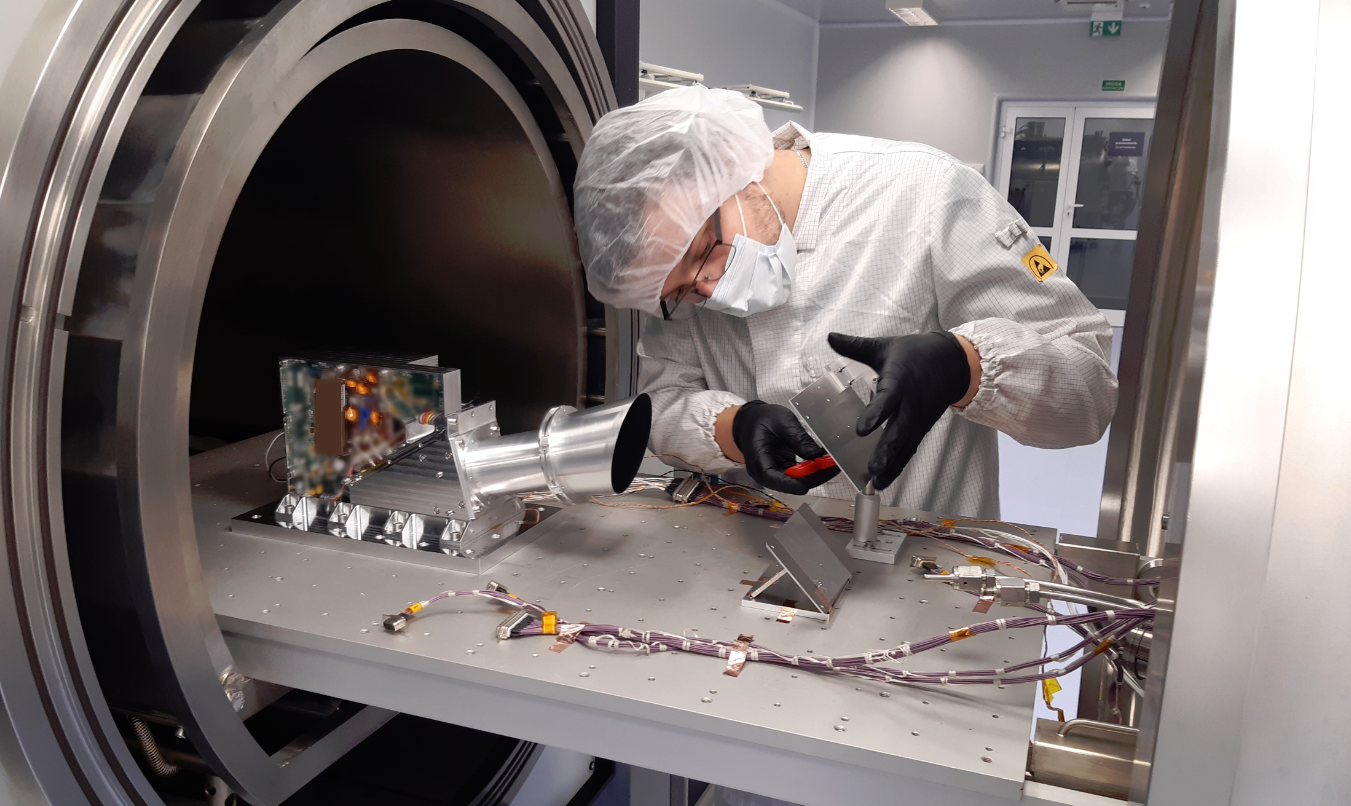GLOWS first light! The instrument is being prepared for a mission NASA IMAP

The Space Research Center of the Polish Academy of Sciences is working on the GLOWS instrument.
Construction of the engineering model has already been completed and testing is underway favorably.
“GLOWS saw the first light,” says Professor Maciej Bzowski, head of the group working on the instrument and the experiment GLOWS.
The Interstellar Mapping and Acceleration Probe (IMAP) is a NASA satellite whose the aim is to study the heliosphere, i.e. the area where the wind pressure solar radiation outweighs that of interstellar matter.
IMAP is an extended continuation of another heliospheric mission – Interstellar Boundary Explorer (IBEX). This NASA science satellite was developed to make the first map of the areas on the boundary of the solar system i interstellar space. Specialists from the Space Research Center of the Polish Academy of Sciences worked on the IBEX mission . The contribution of the Polish scientists was highly appreciated, which resulted in an invitation to participate in the IMAP mission.
– As part of the preparation of the experiment, we designed the entire device: optical system, electronics, power supply system, software to collect data on board and transmit it to Earth and the concept data processing system on Earth – explains Professor Maciej Bzowski, head of the GLOWS team.
The group made prototypes of individual components of the instrument and tested them in laboratory conditions.
– We built a computer model of the heliospheric glow, studied the extra-heliospheric background expected in the experiment, we identified and introduced known astrophysical sources of Lyman-alpha radiation into the model, we have built a list of stars that will be used to calibrate the instrument.
We also built a GLOWS prototype and put it into operation laboratory. Finally, we verified that the instrument can see the Lyman-alpha light, that we want to observe in space. This means that we registered the first light – enumerates Professor Bzowski.
Let’s add that GLOWS is the first completely Polish experiment and instrument being prepared for a NASA mission.
At the Space Research Center of the Polish Academy of Sciences, science has always been inspiring development of technologies to create synergism of effective and purposeful actions – says
prof. dr hab. Iwona Stanisławska, director of the Space Research Center of the Polish Academy of Sciences.
At the turn of August and September this year, the so-called Critical Design Review
(CDR) of the GLOWS instrument took place. The review was attended by experts from
Johns Hopkins University, Southwest Research Institute and NASA. CDRs completed successfully, which means that after the reviewers recommendations have been implemented we were able to proceed with the construction of the proper device, i.e. the so-called flight model, which will be sent into space.
– The complete model was illuminated with a light of the target wavelength . The test was carried out in a vacuum chamber under conditions similar to those we predict in orbit – explains Dr. Eng. Roman Wawrzaszek from the Laboratory of Satellite FPGA Applications of CBK PAN.
The instrument recorded a signal, i.e. “first light”, according to expectations. That is, not only the project itself was considered mature enough on the recent CDR review, but most of all, that the engineering prototype works – adds Dr. Wawrzaszek.
As our specialists inform – the test of the assembled instrument went without a hitch problems. After integration, which was carried out under high purity conditions in the CBK PAN clean-room, the instrument was placed in thermal-vacuum chamber. Tests in a thermal-vacuum chamber was carried out by engineer Kamil Jasiński.
– Because it was the first test of the complete GLOWS system using a deuterium lamp as a source of UV radiation in the line Lyman-alpha, we had to match the number of filters and optical attenuators to
signal level that we expect will be measured. It took several times pumping out the chamber and changing the configuration – explains Dr. Eng. Roman Wawrzaszek.
– In the coming months, the engineers of the GLOWS team will be working on finalizing the production of subassemblies for the qualifying and flight model of the GLOWS instrument. The next important milestone in the project is the qualification model tests. – explains the project manager, Eng.
Karol Mostowy.
The experience gained in the GLOWS project is invaluable and can open up new scientific paths in Poland.
– Satellite observations in the UV range are still innovative and future-oriented field of space research. Unique experience and very specialized technical infrastructure, that are needed during the implementation of the GLOWS instrument, are an excellent basis for the implementation of future satellite missions that will be developed in Poland. The more so that observations in the UV range are often in the in the field of interest of many important research centres, including Polish ones – says dr hab. Eng. Piotr Orleański, deputy director of CBK PAN for technology development.
The IMAP satellite is scheduled to be launched into space in 2025.

